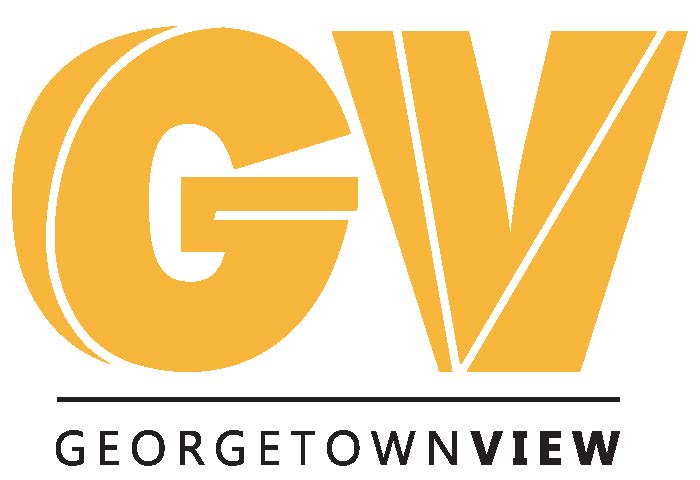When people hear “AI,” their imaginations jump to everything from helpful chatbots to world-ending mechanical uprisings. But according to “Winston,” an enterprise security executive at Microsoft—who spoke to us anonymously so we could also discuss his competitors’ products—understanding AI begins with realizing that not all AI is created equal and not all of it wants your job. Sitting down with Winston helped unpack the different types of AI, how they are used in the real world, and what limitations they still face.
GTV: Let’s start with the basics. Is AI just one big brain—or are there different types?

AL: It’s absolutely not one-size-fits-all. There are levels—categories—of artificial intelligence, each built to handle specific kinds of tasks. Some are simple and rule-based. Others are dynamic and evolving. The best way to use AI is to know which kind you’re dealing with.
Following is a breakdown, with Winston at the keyboard.
Reactive Machines: Fast & Forgetful
“These are your simplest AIs,” Winston explains. “They don’t remember anything. They just react to what’s in front of them. Like IBM’s Deep Blue chess-playing computer, which beat a human champion in 1997—every move is calculated based on the current board. No history, no learning.”
Best for: Tasks with fixed rules and predictable outcomes: factory robots or old-school game AIs.
Limitations: No memory, no ability to improve, and zero adaptability. Efficient, but not imaginative.
Limited Memory: Smart, but Short-Term
“Most of the AI we interact with today—like Alexa, Siri, or even your car’s autopilot—falls into this category,” Winston says. “These systems use past data to make decisions, but they don’t hold onto it long term. They’re like goldfish that know just enough to get the job done.”
Best for: Voice assistants, recommendations, self-driving cars.
Limitations: No long-term learning. “They forget what they learned after the task ends,” Winston says. “It’s all about the here and now.”
Self-Aware: Theoretical & Controversial
“We’re entering sci-fi territory here,” Winston laughs. “This would be AI with consciousness. It would understand itself and have its own motivations. Think HAL from 2001: A Space Odyssey—but ideally with better boundaries and less murdery.”
Best for (hypothetically): Deep space exploration, autonomous systems, advanced R&D.
Limitations: It doesn’t exist—and even if it could, there are serious ethical and philosophical debates about whether we should create it.
Theory of Mind: Coming but Not Here Yet
This is the next big leap: AI that understands human thoughts, emotions, and intent. “We’re not there yet,” Winston says. “But we’re trying. This kind of AI would be able to read the room, understand if you’re frustrated or joking. It would make interactions much more natural.”
Best for (eventually): Therapy bots, collaborative tools, advanced care systems.
Limitations: Still in development, and highly complex. “This kind of empathy-driven AI requires breakthroughs not just in tech, but in how we understand human cognition.”
Generative: The Creative Class
“These are the tools people are talking about now—like our ChatGPT, Jasper, and DALL·E,” Winston says. “They generate new content based on patterns in massive datasets. They can write articles, design logos, write code—you name it. This subset of AI uses models trained on vast amounts of data to generate new content. It doesn’t ‘think,’ but it can produce surprisingly human-like responses, art, and even code.”
Best for: Content creation, brainstorming, coding, design.
Limitations: “They don’t ‘know’ anything,” Winston cautions. “They predict. They remix what they’ve been trained on. So hallucinations — false facts — can creep in, as some unfortunate attorneys found out when they cited imaginary cases in open court. It’s still up to the human to validate the output. Think of it as a clever intern: helpful and occasionally brilliant but not ready to run the company.”
“Google teaches you to fish. ChatGPT gives you the fish — as long as you know what you’re trying to catch. Then, the human still has to decide what to cook. That’s the difference in how we interact with these systems, and the future belongs to people who know how to ask smart questions and validate smart answers. AI can help with both, but it’s still the human behind the screen that steers the ship.”
ENTERPRISE SOLUTIONS: A COMPANY’S PRIVATE “INTERNET”
Large-scale platforms like Microsoft’s Copilot and Google’s Gemini are changing the way businesses access and use their own information. “It’s like giving every employee their own AI-powered research assistant,” Winston explains. Integrated into Microsoft 365, our Copilot can search across a company’s proprietary documents, emails, chats, and presentations—instantly pulling up notes from last Tuesday’s meeting, summarizing the last 10 PowerPoints on a specific topic, or drafting a report using internal data. “It’s essentially your company’s own private Internet,” he says. “But it’s secure, context-aware, and tailored to your business. That’s the real value—speed, accuracy, and insight, all without reinventing the wheel so employees and executives can get back into their priority lanes.”
So What’s the Cost of All This Creativity?
Winston points out the behind-the-scenes cost of using these tools is, as it turns out, all about power. “AI models are enormous. They need incredible computing power, whether we’re using them to create joke-memes or launch a startup,” he says. “That’s why Microsoft is investing in energy innovation—including nuclear.”
Wait…Nuclear??
“Yes. Since 2023, we have been looking at small modular nuclear reactors, or SMRs, to power next-generation data centers, and we’ve invested more than $10 billion,” Winston says. “Our company entered into a 20-year agreement to purchase electricity from the soon-to-be-restarted Unit 1 reactor at Three Mile Island. The reactor is scheduled to resume operations in 2028 as the Crane Clean Energy Center, pending regulatory approval. The revival aims to provide 835 megawatts of carbon-free power to support Microsoft’s expanding AI data centers and aligns with the company’s goal to be carbon-negative by 2030. We’re talking about constant, carbon-free energy that can handle the demand as AI continues to grow. It’s a real commitment to sustainability and infrastructure.”
| Tool | Primary Use | Best For | Strength |
| Microsoft Copilot | Workplace productivity (Microsoft 365 integration) | Business users who need secure, internal data access | Integrated into tools teams already use (Word, Outlook, Excel) |
| Meta AI | Social + conversational assistant across Meta apps | Everyday users of Instagram, Facebook, WhatsApp | Casual chat blends in with app use, generates images |
| Cleo | Personal finance management + budgeting chatbot | Young adults looking to budget, save, and get money tips | Humorous, conversational tone; analyzes spending & gives sass |
| Notion AI | Knowledge organization, writing, and productivity | Students, planners, and creative teams | Builds on existing notes to summarize/generate content |
| GrammarlyGO | Writing improvement with AI tone + content help | Professionals, students, writers | Real-time suggestions, rewrites, and tone shifts in your browser |
| Canva Magic Studio | Design with AI-generated copy, images, and slides | Small business owners, content creators | User-friendly all-in-one creative tool with visual-first focus |
| Lensa AI | Photo editing, avatar creation, glam selfies | Social media users and casual photographers | Stylized, shareable portraits with minimal effort |
| Otter.ai | Voice transcription and meeting summaries | Remote teams, students, journalists | Accurate auto-transcription + smart summaries |
| Replika | AI companion/chatbot for wellness and friendship | People seeking connection or self-reflection | Conversational and emotionally adaptive AI |
